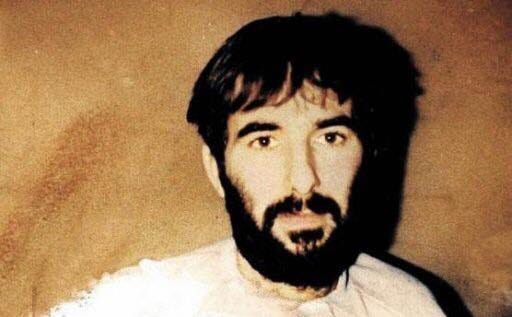Day 187. Iran Threatens. Released Hostages Speak Out. (In Video Clips)
Editor's Note: The article below contains written and audio visual content that is graphic and should be viewed with that in mind and not by young children or others who may be particularly vulnerable. We have translated a small sample of video clips that are everywhere in Israel - in order to give you a true sense of the anguish and impact of this ongoing hostage crisis on the people and the nation.
And, lastly. Please consider supporting our work with a paid subscription. Particularly during such an important time my strong preference is not to paywall but we are considering doing so. Our work is valued by our very rapidly growing subscriber base. If you are among them then please consider buying a cuppa coffee each month for me and my small and dedicated team. We require resources to do this work. Recognition of that by you is so important. Thanks for considering this "light" appeal.
Last Friday afternoon I was busy stocking up on provisions, the sort of things you need if you are going to be living for a prolonged time in an underground bomb shelter.
Wireless phone charger. Water. Non-perishable food. Anti-bacterial wipes. A good friend in the IDF suggested packing a “go” bag and leaving it by the door. Basics. Cash. Passports. Medicines. Other essentials.
The guy at my local gadget shop said there had been a run on batteries. I was lucky to find one. We exchanged information about what to have packed and ready. Neither one of us wants to be caught, as so many Israelis were on October 7th, without the essentials we need.
People in Israel don’t panic or scare easily but there is a pervasive, heightened alert these days.
On Monday, April 6th, an Iranian government compound in Damascus, said to function as local HQ for the IRGC, was target-bombed by Israel and destroyed.
Since then, the Islamic Republic of Iran has been threatening a retaliatory strike. It could be against a Jewish or Israeli target in Europe, North or South America, anywhere, really. It could be in Israel.
If the latter, the concern is that Iran – possibly in collaboration with its neighborhood proxies like the Houthis and Hizballah – could launch a swarm drone attack. It is public knowledge that Israel lacks a defensive capability to detect and neutralize drones. Yes. Israel has a legendary air force. But drones and other weapons are more heavily relied upon by non-traditional armies. And when they challenge a conventional force, like the IDF, we have what is known as asymmetrical warfare. We’re just not engaging on the same level. But the terrorist forces may now have a particular advantage.
For many years it has been understood that in any conflict with Hizballah and Iran the primary targets in Israel would be key military and civilian infrastructure: electrical system, water supply, army and air force bases. Drones flying slowly and at low altitudes can target such infrastructure, undetected.
Sunday marked the six-month anniversary of October 7th.
Several weeks ago, PM Netanyahu met with the parents of some of the male soldiers captured alive that day by Hamas. We know that they have been subjected to extreme torture. That their families – and all Israelis – are in this position six months on is incomprehensible. Everyone knows, but few dare say it out loud, that the likelihood of hostages surviving so long in captivity under exceptionally harsh conditions, is slim. As one father said to the press after the meeting: “Are we going to be a nation of 134 Ron Arads?”
Ron Arad is a haunting icon in Israel. An Israeli Air Force navigator, he was on a sortie over Lebanon in 1986 and his aircraft was hit by a rocket. The pilot parachuted to safety. Arad was captured upon landing by hostile forces. It is believed he was sold from militia to militia and may eventually have ended up in prison in Iran. The IDF has since declared him dead but his wife, Tami, and their baby daughter, Yuval, waited many years for that “closure.”
There is a dread among Israelis today. After six months, how many hostages remain alive?
On Saturday, we learned that 47-year old Elad Katzir was murdered after three months in captivity and buried in Khan Younis. With intelligence obtained from a captured Palestinian Islamic Jihad fighter, the IDF exhumed Katzir’s remains and repatriated him to Israel for a dignified burial.
Devastated by the news of Katzir, the Hostage Family Forum held a hastily convened press event on Saturday night in Hostage Square. About 20 family members of those still in captivity expressed their deep sorrow and implored the government to just bring them home. Now.
Israel has always asked so much of its citizens and they have delivered. But it was understood that the state would deliver, too; that the state would move heaven and earth to rescue any soldier or citizen, dead or alive, in the hands of the enemy. That promise has bound army to people to government to army in a closed and trusting system. But that understanding has now been strained and, quite possibly, broken. And that is the true cost of this ongoing nightmare; that the powerful bonds holding this country together may have atrophied, irreparably.
Two weeks ago, I decided to view the 47-minute film and audio compilation of horror from October 7th. My reasons for doing so are personal and professional, the latter having to do with a book I am writing. I felt it was necessary to view the footage.
For the viewing I joined a group of newly deployed U.S. Marines at an IDF base in Tel Aviv. There were about 15 of us in a small, windowless room. An IDF reserve soldier introduced himself. He told us that he had spent every waking moment since October 7th reviewing video, audio, social media feeds, photographs; any evidence that became available from that day. Almost of the material came from Hamas phones and GoPro cams. The stuff included in the 47-minute compilation represented a fraction of the overall trove Israeli authorities have recovered.
And what the IDF had managed to obtain was a small part of what exists, almost all of it preserved on phones and other devices in the Gaza Strip.
There was a box of Kleenex on the table. The IDF reservist turned off the lights and the savagery began. Unceasing. For 47-minutes. It is sheer hell. Raging killers throwing grenades into enclosed spaces where they know civilians huddle. Hacking off heads with machetes. Constantly yelling “Allahu Akhbar.” Madness. And they were having lots of fun. Boasting. Laughing as people begged for their lives.
At the end no one asked any questions. No one moved. You wanted to be anywhere but there. When you sit in a small room, several feet from this screen, you become a part of it. You are immersed in it.
A victim of rape in Hamas captivity came forward recently. Forty year old Amit Soussana, a lawyer who was captured from Kibbutz Kfar Aza, was in Hamas captivity for 55 days.
Soussana’s mother and I have a mutual friend. She told me that Amit did not disclose 90% of the monstrous treatment she suffered at the hands of Hamas. Everyone who was released is very mindful of those they left behind. Most have family members, friends, and new relationships formed in their underground cages. So, they reveal little, if anything. But in the wake of the widespread denial, globally, of the October 7th horrors and mistreatment of hostages, Amit Soussana felt compelled to say something.
So did 72-year-old Adina Moses, who was held hostage by Hamas until November 24, 2023. She spoke a few weeks ago at the Saturday night rally in Tel Aviv in support of the hostages still in captivity. Her grief is primal.
Listen to her. Look at her. Don’t look away.
(English subtitles are included.)
Translation to English by Maya Naftolin
Maya Regev, a 22-year old who was held hostage with her 18-year-old brother, Itay, was released on November 25, 2023. Her close friend, 21-year-old Omer Shem Tov, remains in captivity. He suffers from celiac disease and asthma. Omer’s family has worked tirelessly for his release, as well as all the others. In a previous dispatch we included a clip of his father, Malki Shem Tov, confronting Mirjana Spoljaric, the president of the International Red Cross, with an inhaler his son requires to breathe. On January 5, 2024, STLV published a written article reporting on particularly dramatic encounters of various hostages and family members. Included in that piece is a video clip of Malki Shem Tov forcing Spoljaric to receive his son's medication. It is heartbreaking, as are all the other stories, which you can read here.
Maya Regev was injured during the Nova festival attack and was operated on in the Gaza Strip. The botched procedure left one of her feet re-attached haphazardly. She is just beginning to learn to walk again following multiple surgeries since her return to Israel. Last week, when Amit Soussana spoke up and so much information came to light, Maya Regev, too, raised her voice. She appeared at an emergency meeting of the Knesset Committee on Women’s Status and Gender Equality on April 2nd,2024. Part of her testimony, with English subtitles, is gutting.
Translation to English by Maya Naftolin
The 47-minute video reflects mere glimpses of the wild invasion of October 7th. Planned but frenzied. It is beyond surreal how totally Israel’s national security apparatus collapsed. How much went wrong. They came in, the attackers, unimpeded, on beaches by air, land and sea. They encountered no resistance from the army or air force; just from random village defense units that were effective in some places, not in others.
No one understands how this could come to pass.
Hundreds of soldiers - we think - were killed on the morning of October 7th but we know little of what actually transpired. What happened? Where was the air force? The army? How could Hamas and marauding civilians just be allowed to roam so freely? For hours?
A good friend of mine is a seventh generation Israeli and former elite combat soldier. His son is serving in a similar role today. His grandchildren will surely fight. The dream of peace has been shattered, utterly.
We were chatting one day recently. He is adamant. He wants a national inquiry into what happened. I ask him why.
“What will it prove? What will it do other than sear our souls and force us to relive the trauma?”
“I want to know how deep the rot goes”, he says.
I’m not sure I do.











Great summary of the extreme tension between Israeli citizens and their government. I so recall the commander of the Entebbe raid, Dan Shomron, being asked what the most important and memorable part of that mission was. He said it was the moment when the doors of the Hercules planes were about the close for the flight back to Israel and he asked, 'is everyone here, is everyone on board?'. The answer was 'yes'. That was the essence of the understanding and bond you mentioned. It will take a very long time to restore.
I wish Canada would stand with Israel and their hostages. I know Canadians do. Keep up your great work keeping us informed Vivian!